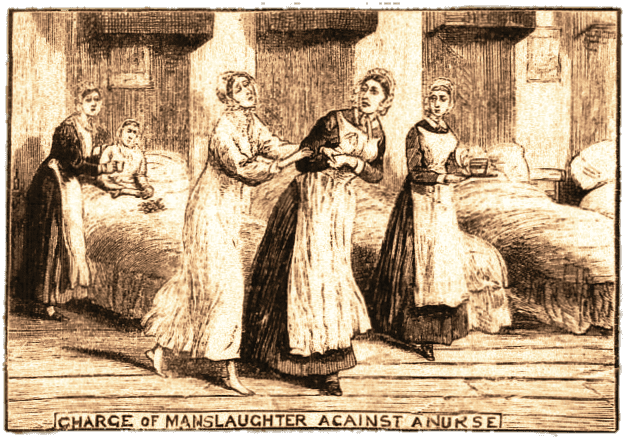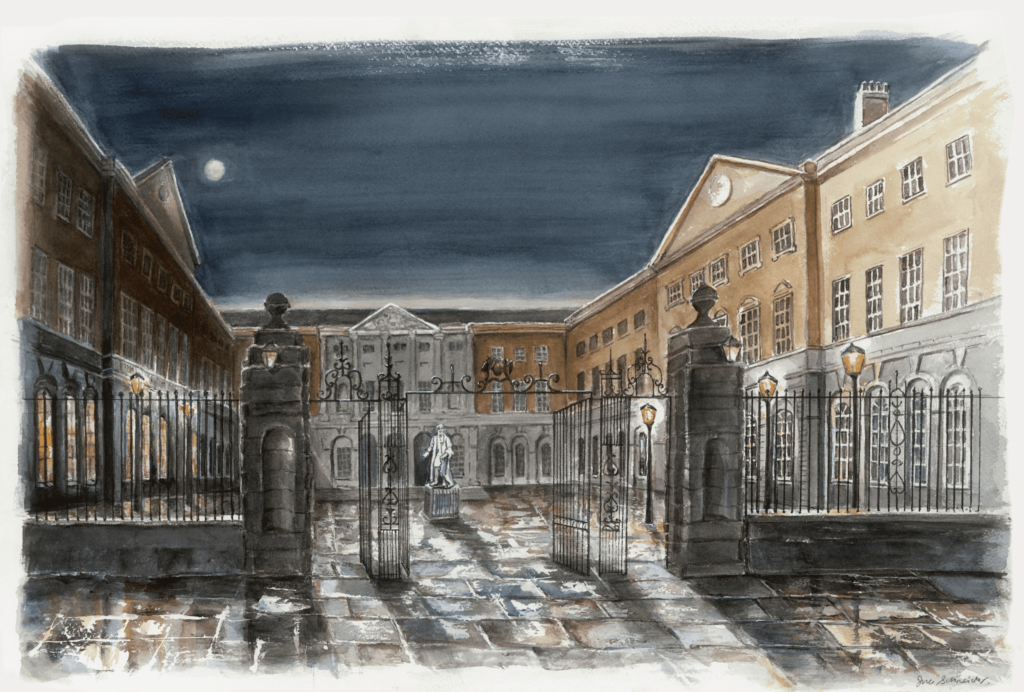Author Interview
Annie Graham
Author of Louisa's Lament
Annie Graham has a book coming out shortly based on the life of Miss Louisa Ingle. It’s called Louisa’s Lament and it tells the story of how Miss Ingle went from being a hard-working nurse at London’s Guy’s Hospital to a despised outcast, shunned and condemned by her colleagues.
Caught in a bitter dispute between the hospital’s modernisers and traditionalists, she was a scapegoat for the warring factions when the conflict tumbled out of control in the summer of 1880. This is the story of that struggle and her downfall, and how she learned of the conspiracy that entangled her and drove her into deep despair at the rank injustice of her betrayal.
But it is also the inspiring true story of a group of pioneering women as they stepped out of Florence Nightingale’s shadow to establish the value of nursing as a profession for independent women.

What made you want to write about Miss Ingle?
Louisa Ingle has been a presence in my life for over thirty years since I came across her while researching for my thesis into medical power and conflict. Although life moved on, I have always felt a sense of injustice at how she was treated; and a desire to tell her story, and that of her fellow nurses, Margaret Burt, Victoria Jones, and Margaret Lonsdale, has lingered.
What other themes are there?
The 19th century was a time of great change with many political and social reforms. For Miss Ingle’s story, I concentrated on the rapidly developing print industry and the role of the press, and some of its key editors, in shaping attitudes to women in positions of authority in the workplace. Also, I could not ignore the underlying religious tensions that existed between the High Church Anglicans and the Non-conformists.
How did this play out in Miss Ingle’s story?
Much of the modernisation of nursing in the mid-late 19th century was brought about by gentlewomen and devout educated women who sought to improve the lives of the poor and destitute, of whom there were so many in London’s slums. Many aspiring nurses joined the Anglican Sisterhoods of Nursing to further their work. Seen as being too close to ‘Rome’, the Sisterhoods brought nurses into conflict with many of London’s physicians and surgeons who were Non-conformists. This tension, which reflected society’s wider concerns about the malevolent role of the Catholic Church, is at the heart of Miss Ingle’s story.
There seem to be several themes here?
While the story focuses on Miss Ingle’s betrayal and how she came to terms with the events of the summer of 1880, it also tells the story of the tensions in the workplace as women challenged the traditional ways of working in the late 19th century.
Although set in Guy’s Hospital, this story tells us a lot about the power structures in wider Victorian society.

Newspaper image © The British Library Board. All rights reserved.
With thanks to The British Newspaper Archive

Newspaper image © The British Library Board. All rights reserved.
With thanks to The British Newspaper Archive
What were your sources for the story?
I was privileged to have access to Guy’s Hospital’s minute books, correspondence and hospital records kept during the dispute which are held in King’s College’s Library Archive. I was also able to view photographs taken at the time which are part of the collection. I also had access to the London Metropolitan Archives, the National Archives, the British Library’s collection of 19th century newspapers and journals, the Royal College of Physicians’ and the British Medical Association’s Archives, and the Old Bailey’s Archives for Miss Ingle’s trial and sentencing records. The work of the archivists in cataloguing and keeping these records for researchers cannot be praised enough.
Would you tell us about the illustrations for the book?
During my research, I viewed many paintings, photographs and illustrations from the period, and they gave me a clear picture of what the people in Miss Ingle’s story would have seen at the time. I wanted to convey the scenes that were so vivid in my head as I was writing to my readers. I was fortunate to meet the artist June Schneider who worked with me on building the pictures that you see as frontispieces to each section of the book. I think you will agree on what a fine job she has done in bringing my words to life.
You can read more about the process and see some of the illustrations here.

London Guy's Hospital circa 1880 by artist June Schneider
Why have you decided to give the proceeds of this book to Birkbeck College, London University?
I studied for my PhD in medical politics and conflict at Birkbeck’s Department of Organisational Psychology and an MA in Victorian Studies at the English and History Departments. To understand modern day behaviours and conflicts in hospitals, you need to examine their roots in the 19th century, hence my studies. I came across Miss Ingle’s case in a footnote to the history of Guy’s Hospital and she has lived with me ever since. Birkbeck educates mature students and those who need to work while studying so I can think of no better charity than its students’ hardship fund to support with the proceeds from this book. You can read more about this on the Birkbeck College website here.
What's next?
I have several writing projects on the go, all about organisational politics in one way or another, so stay in touch for updates.
Where and when can we buy Louisa's Lament?
You can buy it directly from my publisher’s online shop, or find it on Amazon and good bookshops, we expect it to be available in Spring 2023. For a signed copy, pre-order from Pat Oakley Publishing’s website shop.
Are there more books I can read on the subject?
Having read Louisa’s Lament, you may be interested in learning more about life in London in the late 19th century. I’ve put together a reading list for you here.
